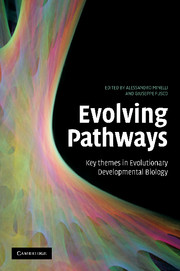Part II - Evo-devo: methods and materials
Published online by Cambridge University Press: 08 August 2009
Summary
If evo-devo is a discipline in its own right, is there a distinctive set of biological systems and methods of investigation through which it is currently advancing? Although evo-devo probably does not rely upon specific tools of analysis unknown in other fields of biological research, because of its particular relationships to both evolutionary and developmental biology evo-devo exhibits a specific combination of model systems and research tools. In other words, to use a fashionable term in developmental genetics, it has its own toolkit. However, what is most distinctive about evo-devo materials and methods is that, precisely because tools devised in other fields are here used at the borders of their original range of application, investigations in this interdisciplinary territory periodically need a critical evaluation of the sharpness, precision and adequacy of these tools. A survey of this important work is offered in this section.
The model organism approach has become the lingua franca in modern biology. However, a good model for medicine, where one searches for conserved features shared with humans, is not necessarily a good model for understanding evolutionary change. Athanasia Tzika and Michel Milinkovitch (Chapter 7) tackle the problem of model organism choice in evo-devo studies. The authors propose a pragmatic optimisation approach that incorporates criteria suggested by evolutionary history such as the phylogenetic position of candidate model species and the presence of ancestral/derived character states, along with practical attributes such as the feasibility of handling, housing and breeding.
- Type
- Chapter
- Information
- Evolving PathwaysKey Themes in Evolutionary Developmental Biology, pp. 121 - 122Publisher: Cambridge University PressPrint publication year: 2008



